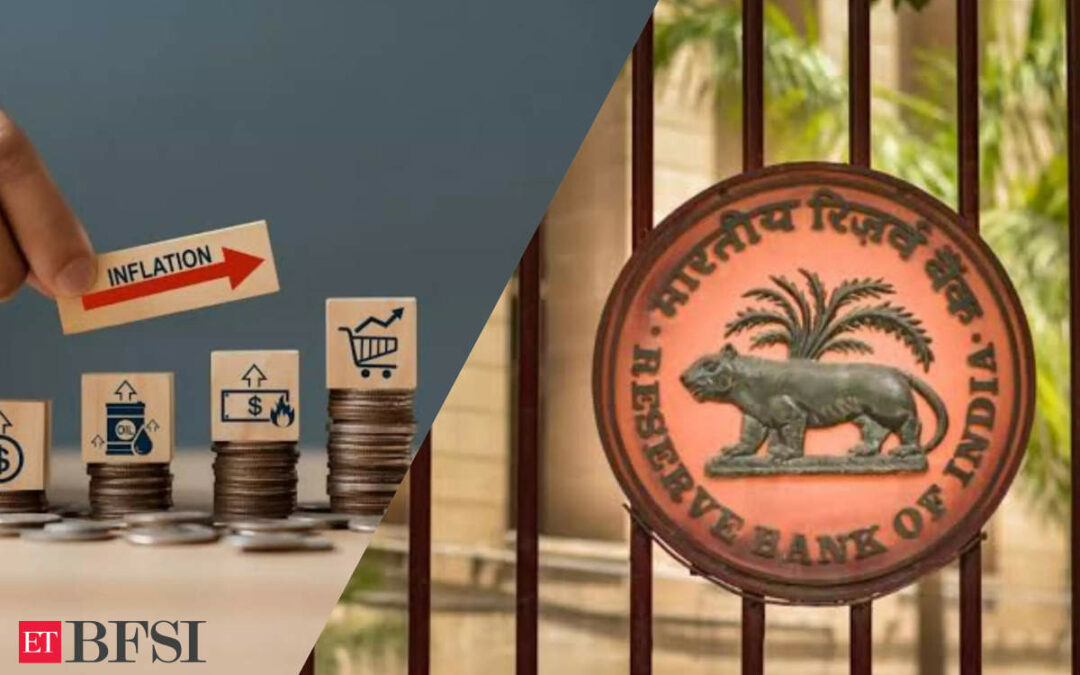The upcoming Reserve Bank of India (RBI) monetary policy meeting comes amid a sharp spike in vegetable prices, a spatially uneven monsoon, and a divergent global monetary policy cycle.
As seasonal inflationary pressures gather momentum, India’s central bank is expected to prolong the pause, thereby maintaining a status quo in both policy rates and stance to support growth and fight the accelerating food inflation.
Post an aggressive rate hike regime, RBI was successful in lowering consumer price index-based inflation to a 2-year low of 4.25 percent in May. However, this took a turnaround shift, as retail inflation surged to a 3-month high of 4.81 percent in June.
According to a latest report by CareEdge Ratings, despite the recent surge in inflation, which can be attributed to transitory factors such as a significant increase in vegetable prices, there are underlying forces that could sustain elevated inflation levels in the coming months.
By the end of July, the eastern Gangetic plains still experienced significant rainfall deficits, while parts of western India, including Rajasthan and Gujarat, witnessed an excess surplus of rainfall.
The current progress of the monsoon is not only spatially skewed but is expected to have temporal variations as well, it said.
The monsoon’s progress witnessed a turnaround shift from a 10% deficit in June to a 5% surplus in July. However, recent reports from IMD predict a below-normal rainfall (less than 94% of LPA) in August.
The erratic monsoon has resulted in lower sowing of certain kharif crops like pulses which could also contribute to growing inflationary pressures in the coming months, the Ratings agency added.
Most economists, as per a survey of economists by Reuters anticipate higher-than-expected inflation in the second quarter. Some experts even speculate a 25 basis points hike over the next two policy reviews if essential item prices keep surging.
With this backdrop, the survey indicates that a more pronounced hawkish stance in the 10 August meeting is anticipated, irrespective of whether the repo rate remains unchanged.
Policymakers are also keeping an eye on the likely occurrence of El Nino, which brings drier weather conditions and can affect crop yields, highlighted another survey conducted by Bloomberg.
Latest spike in international crude oil prices to three-month high (11% since June) due to supply cuts from the Organization of the Petroleum Exporting Countries (OPEC) could also put upward pressure on inflation, apart from vagaries arising from monsoon and agriculture-related issues.
Factoring for the transient near-term risks from the weather-related factors, CarEdge Ratings have increased their projection of inflation for FY24 to 5.3% from 5.1% earlier.
“The RBI is also expected to revise its inflation projection higher. Having said that, contracting WPI along with softness in many global commodity prices will provide some cushion to the rising inflationary pressures with a lag. Expected moderation in the core inflation will also provide some comfort,” it explained.
While inflationary pressures are up, stronger than expected momentum in domestic investments resulted in major international agencies like IMF revising up India’s growth projections to 6.1% from 5.9% earlier this year.
As per the CareEdge study, there are no new major headwinds to growth projections.
We expect RBI to maintain its growth projections at 6.5% for FY24. Our GDP growth projection for FY24 is in line with RBI’s projection, it added.











